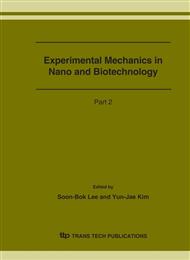p.1287
p.1291
p.1295
p.1301
p.1305
p.1309
p.1313
p.1317
p.1321
Local Heat Transfer Measurements and Numerical Analysis in the Cooling Passage of the Ventilated Disc Brake with Semi-Cylindrically Grooved Surface
Abstract:
The local heat transfer measurements in the cooling flow passage having both flat surface and semi-cylindrically grooved surface geometries inside the automobile disc brake were made. A uniform wall heat flux boundary condition on both surface geometries was created using gold film Intrex. Liquid crystal was used to measure the surface temperature. The experiments were made at Reynolds number (based on the hydraulic diameter of the rectangular duct) of Re=23,000, groove pitch-to-width (P/D) from 3 to 7, and groove depth-to-width (H/D) from 0.15 to 0.2. The results show that the magnitudes in the average Nusselt number on the grooved surface are maximum 92.8% higher than those on the flat surface without groove. A computer program utilizing the coupled FEM numerical technique that can predict the temperature distributions on the disc brake to analyze the thermal deformation has been developed.
Info:
Periodical:
Pages:
1305-1308
Citation:
Online since:
December 2006
Price:
Сopyright:
© 2006 Trans Tech Publications Ltd. All Rights Reserved
Share:
Citation:


